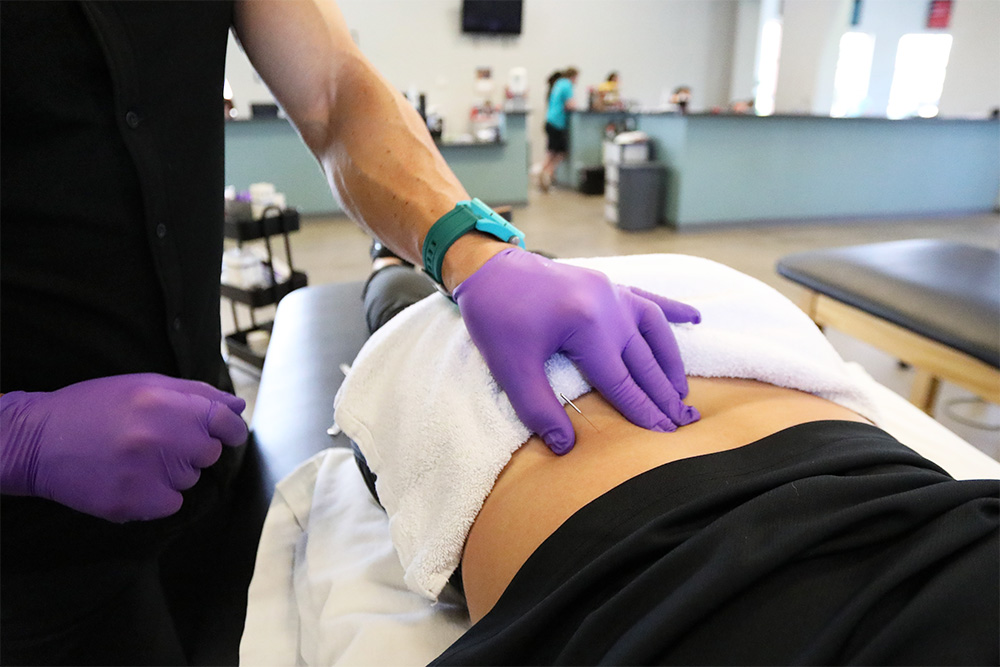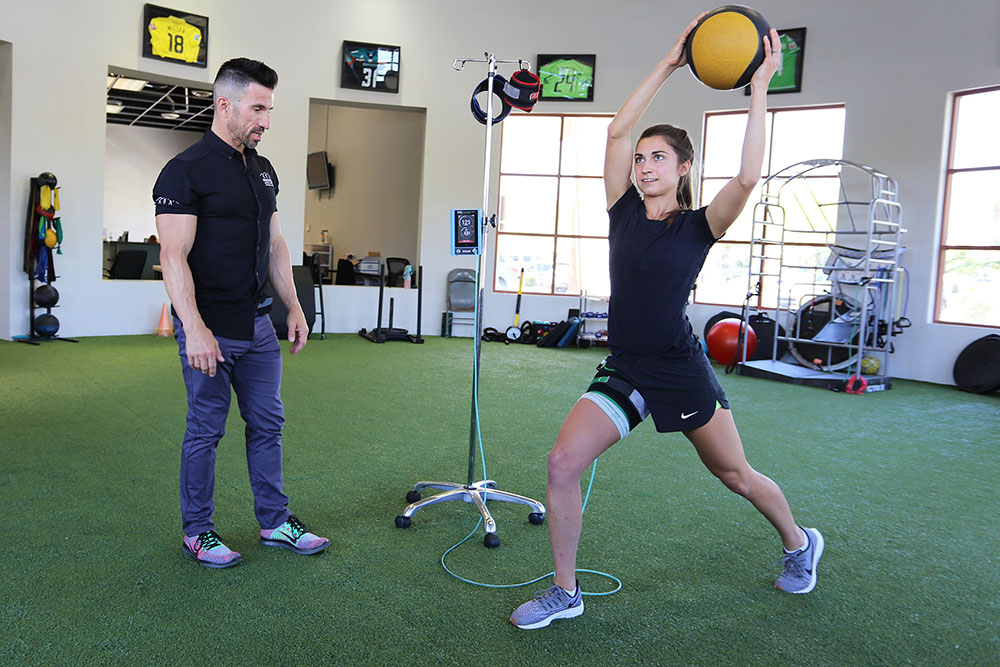by Jim Kester PT, DPT, Cert. SMT, Cert. DN | Clinic Director Sun City Location
Lower back pain is common in our society, with an estimated 80 percent of all adults being afflicted at some point in their lifetime. Of those, approximately 10 to 20 percent will also experience sciatica symptoms. If you’re a sciatica sufferer, it is necessary to understand sciatica and discover the root cause to achieve the best results while receiving physical therapy for back pain.
Sciatica can manifest in multiple ways, ranging from aching pain, shooting pain, numbness, tingling, burning, and occasional weakness of the affected lower extremity. The symptoms may travel to the thigh, lower leg, and foot. Depending on the activity level and lifestyle of the individual, the symptoms can be constant or intermittent. Many who suffer will experience symptoms for years, and some only suffer short-term. The intensity of symptoms in different individuals can vary from annoying to debilitating.

So What Exactly is Sciatica?
Sciatica is commonly understood as a pinched nerve in the lower back. Many clinicians think of sciatica as a vague diagnosis because it does not truly describe the cause of the symptoms. For the patient to be treated effectively, a cause must be found.
Causes of Sciatica
In most cases, sciatic symptoms result from compression of a peripheral nerve root in the lumbar spine. However, sciatica can also be caused by other conditions like spinal stenosis, lumbar disc bulging, degenerative disc disease, and advanced arthritis.
Spinal stenosis is the narrowing of the bony opening the nerve passes through. Lumbar disc bulging (LDH), or disc herniation, can push the nerve against the surrounding bone. Degenerative disc disease (DDD) results in excessive vertical compression and loss of the spacing between vertebrae. Advanced arthritis of the spinal joints (spondylosis) may result in bony compression or the formation of bone spurs that push against the nerve. The severity of symptoms depends upon the degree of this compression or “pinching.” All sciatic symptoms cannot be treated with the same approach. Understanding the true cause is a priority if the condition is to be treated effectively.
LDH must be treated differently than DDD, which must be treated differently than spondylosis or stenosis. A thorough evaluation by an experienced clinician often will provide a good working diagnosis for treatment. Standard X-ray, MRI, or CT scans can provide additional information and support the evaluation’s findings, though it should be noted they are not always necessary for an accurate diagnosis.
But what about those situations when sciatica is present, and imaging shows a relatively normal spine? Many other conditions can mimic sciatic pain: dysfunctions of irritation of the sacroiliac (SI) joint, piriformis syndrome, myofascial trigger points within the gluteus medius muscle, iliotibial band syndrome (ITB), and osteoarthritis of the hip.
Once the true cause has been determined, treatment for sciatica can vary widely. While receiving physical therapy for back pain, postural education and an appropriate exercise program are essential in the long-term management of symptoms, regardless of cause. Other treatment interventions can include spinal manipulation or mobilization, myofascial release, trigger point dry needling, or spinal traction. Education on lifestyle changes and maintaining an ideal body weight are also important aspects of the ongoing sciatica treatment.
There are no quick fixes for sciatic pain. The condition often develops slowly, and symptoms can begin gradually or suddenly. Sciatica is a complex and unpredictable diagnosis and affects each individual very differently. An experienced physical therapist can accurately diagnose and treat sciatica, whatever the cause may be, minimizing symptoms, restoring function, and educating on long-term management. Schedule an appointment today to meet with one of our physical therapists and learn how physical therapy for back pain can help you get back to the activities you love.






